John Hurrell – 28 June, 2016
In this show we see excellent examples of Kreisler's ‘casual' canvas paintings, each one not rushed as it may appear, but carefully constructed by his sorting through a range of alternative and tested drawn possibilities. While the humour may be described as ‘flippant' it is not cocky or slick. There is a deep anxiety in much of Kreisler's work, a suspicion of easy accessibility, a distrust of being seen as entertaining, a willingness to be contrarian or difficult.
Curated by Wystan Curnow (New Zealand’s most seasoned exhibition curator and critic) this Kreisler show of seven canvases, nine screenprints and nine sheets of preparatory drawing is a great opportunity to examine once more the output of this much loved, nationally significant, New Plymouth-based artist. Highly regarded for his distinctively stained canvases, (often caustic) humour, love of language and fluid, spontaneously sketched studies, most of these works fit into the themes of weather maps and dancing dogs. The images have strong satirical overtones, possibly alluding to the social behaviours of the art world itself.
There are four maps and seven dogs; some doubling up as both - and lots of dancing humans too. When these are not about meteorological New Zealand then they seem to be about human interaction, especially the giveaway gestures that people (here mimicked by canine couples) make: sometimes conspiratorial, sometimes paranoid - shielding hands (hiding furtive whispering), arching torsos, querulous, or sneering physiognomies.
Curnow‘s selection zeros in on Kreisler’s drawing. Sometimes an ink study is placed alongside the final canvas version (as in Prosaic Mosaic, 1988), and that painting, with its drawn depiction of a butting together of two canvases, in turn links to other related works that you can find (if you look) in the 2007 comma dot dogma Kreisler survey catalogue: Dawson Falls (1991); and Two Esoteric Low Pressure Systems (1983), the latter being map-based too.
Kreisler‘s ink drawings on translucent paper are fabulously entertaining studies of human expression and mood. He employs two types of cartoon dog: pointy-eared terrier types who stand around on their back legs, yabbering, dancing, and guzzling wine; and floppy-eared beagle varieties that tend to creep about on all fours, cower and howl. They might be a comment on exhibition openings, and the various divisions and social/political rifts within the art world.
Extending this line of thought, the maps with their moving fronts could be comments on art fashion, historic movements that appear, affect the practice of various communities of artists for two or three decades, gain some traction, peter out and then disappear.
Several other works feature the human body. The screenprints present fields of geometricised dancing people, as if on a giant dance floor and mesmerised by a pulsing strobe, while 2 Feet Twice has a tall vertical stretcher that looks almost to be twice its width in height. It seems to reference Masaccio‘s The Expulsion from the Garden of Eden (1427), showing the naked Adam and Eve being banished by the angel Gabriel, and presenting the fleeing couple in both top and bottom halves, but without the elongated proportions of the original. (Kreisler’s drawn people and animals tend to be dumpy.)
Another painting, Testonterosis (c.2000), pokes fun at athletes or fitness enthusiasts doing warming up exercises in the gym. Another still, Entitled (1989), is very painterly and seems to be a joke about skin colour and community participation. The group of figures might be lounging around talking, or it could be a multi-racial orgy, with two figures off on the left watching.
In this show (not his overall corpus which is quite complicated, with several methodologies) we see excellent examples of Kreisler‘s ‘casual’ canvas paintings, each one being not as rushed as it may appear, but carefully constructed by his sorting through a range of alternative and tested drawn possibilities. While the humour may be described as ‘flippant’ it is not cocky or slick. There is a deep anxiety in much of Kreisler‘s work, a suspicion of easy accessibility, a distrust of being seen as entertaining, a willingness to be contrarian or difficult. You need to absorb these images slowly so you can mentally dig around them - to discover their associations. Enjoying a gradual osmosis.
John Hurrell
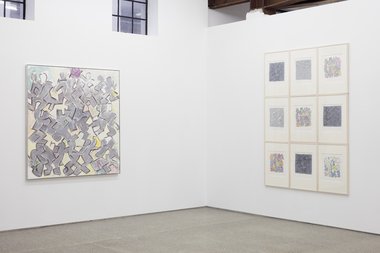
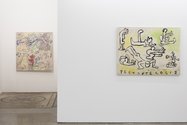
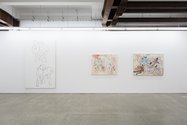

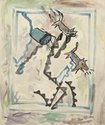
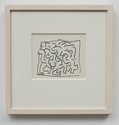
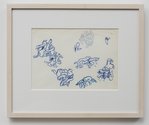
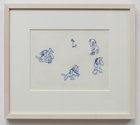
 Two Rooms presents a program of residencies and projects
Two Rooms presents a program of residencies and projects Advertising in this column
Advertising in this column



This Discussion has 0 comments.
Comment
Participate
Register to Participate.
Sign in
Sign in to an existing account.